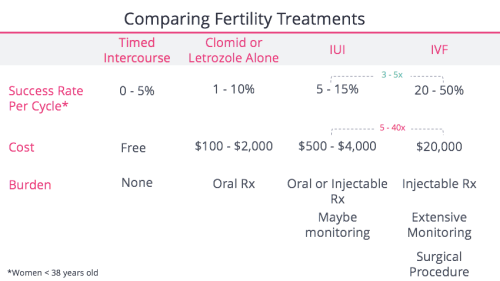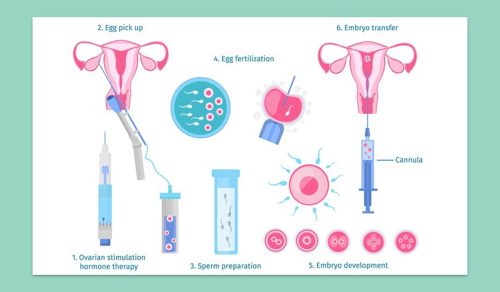Does Kaiser Permanente Cover IVF? Your Guide to Understanding Fertility Benefits
Navigating the world of fertility treatments can feel like wandering through a maze—especially when it comes to figuring out what your insurance will cover. If you’re a Kaiser Permanente member wondering, “Does Kaiser cover IVF?” you’re not alone. It’s a big question, and the answer isn’t always straightforward. But don’t worry—I’m here to break it down for you in a way that’s easy to understand, with all the details you need to make sense of your options. Whether you’re just starting to explore in vitro fertilization (IVF) or you’re ready to take the next step, this guide will give you the clarity and confidence to move forward.
What Is IVF, and Why Does Coverage Matter?
IVF is a fertility treatment where eggs and sperm are combined in a lab to create embryos, which are then placed in the uterus to hopefully result in a pregnancy. It’s a game-changer for many people facing infertility—think blocked fallopian tubes, low sperm count, or unexplained challenges getting pregnant. But here’s the catch: IVF isn’t cheap. A single cycle can cost anywhere from $12,000 to $20,000, and that’s before you add in medications, which can tack on another $3,000 to $8,000. For most folks, that’s a huge financial hurdle without insurance help.
That’s where coverage comes in. If your insurance plan includes IVF benefits, it can lighten the load significantly—sometimes covering part or even all of the process. For Kaiser Permanente members, understanding what’s covered (and what’s not) is the first step to planning your journey. So, let’s dive into how Kaiser handles IVF and what it means for you.
Kaiser Permanente and IVF: The Basics
Kaiser Permanente is a massive healthcare system known for its all-in-one approach—doctors, hospitals, and insurance under one roof. But when it comes to IVF, coverage isn’t a one-size-fits-all deal. It depends on your specific plan, where you live, and even your employer if you get Kaiser through work. Here’s the scoop:
- Not All Plans Cover IVF: Many Kaiser members have basic infertility coverage, which might include things like diagnostic tests (blood work, ultrasounds) or simpler treatments like intrauterine insemination (IUI). But IVF? That’s a separate benefit, and not everyone has it.
- Location Matters: Kaiser operates differently across regions—like Northern California, Southern California, or the Pacific Northwest. Some areas have specialized fertility centers (think Kaiser IVF Centers in Fremont or Sacramento), while others might refer you out to partner clinics.
- Check Your Plan: The key document is your Evidence of Coverage (EOC). This is your insurance contract, and it spells out exactly what’s included. If IVF is listed as a “covered benefit,” you’re in luck. If not, you might be looking at out-of-pocket costs.
So, step one? Call Kaiser Member Services (usually a number on your insurance card) or log into your online account to pull up your EOC. It’s not the most exciting read, but it’s your roadmap to understanding what Kaiser will pay for.
How Kaiser’s IVF Coverage Works When You Have It
Let’s say you do have IVF coverage through Kaiser—congrats, that’s a big win! But what does it actually cover? Here’s a breakdown based on what Kaiser typically offers when IVF is part of your plan:
- The Full Cycle: A “cycle” of IVF includes ovarian stimulation (hormone shots to grow eggs), egg retrieval, sperm collection, lab fertilization, and embryo transfer. If your plan covers IVF, these core steps are usually included.
- Medications: Fertility drugs can be a huge chunk of the cost. Some plans cover them fully, others partially, and some leave you to foot the bill. Kaiser often works with specialty pharmacies, so you’ll pay based on your drug benefits.
- Extras: Things like embryo freezing, genetic testing (called PGT), or using donor eggs/sperm might not be covered—or might come with limits. For example, Kaiser might cover freezing embryos for six months but charge for storage after that.
Real Costs with Coverage
Even with insurance, you’re not off the hook entirely. Co-pays, deductibles, and co-insurance can add up. At Kaiser’s Centers for Reproductive Health, a single IVF cycle might range from $17,000 to $20,000 without insurance. With coverage, your out-of-pocket could drop to a few thousand—or less if your plan is generous. For instance, one member shared online that their co-pay was $500 per cycle after hitting their deductible. Your numbers will depend on your plan’s fine print.
A Quick Tip
Ask Kaiser for a “cost estimate” before you start. They’ll factor in your benefits and give you a ballpark figure. It’s not set in stone (treatment can change), but it’s a solid starting point.
What If Your Kaiser Plan Doesn’t Cover IVF?
No IVF benefit? Don’t lose hope just yet—there are still ways to make it work. Here’s what you can do if Kaiser won’t cover the full process:
- Partial Coverage: Even without IVF benefits, your plan might cover initial steps like fertility testing or medications. For example, hormone shots for ovarian stimulation might fall under your prescription benefits.
- Fee-for-Service Option: Kaiser offers IVF on a cash-pay basis at their fertility clinics. In Northern California, a fresh IVF cycle might cost $17,420 to $20,600, depending on extras like genetic testing. It’s pricey, but Kaiser’s rates are often competitive compared to private clinics.
- Look Outside Kaiser: Some members team up with external fertility clinics (like California IVF Fertility Center) that might offer lower rates or financing. Kaiser can still handle your initial tests, then you transfer care for the IVF part.
A California Twist
If you’re in California, there’s a new law as of 2025 that might help. Signed by Governor Gavin Newsom, it requires many insurance plans to cover IVF starting January 1, 2025. Kaiser plans regulated by the state (not all are—some are “self-funded” through employers) might have to comply. Check with Kaiser to see if your plan qualifies—it could be a game-changer.
Factors That Affect Your Coverage
Why does coverage vary so much? It’s not random—here are the big players:
- Your Employer: If you get Kaiser through work, your company decides what’s in the plan. Big employers might spring for IVF; smaller ones might skip it to keep premiums low.
- State Laws: California’s new mandate is a big deal, but other states Kaiser serves (like Oregon or Washington) don’t require IVF coverage yet. Where you live shapes your options.
- Your Age and Health: Kaiser might have rules about who qualifies—like age limits (often under 45) or requiring a medical reason for infertility (not just wanting to use donor eggs for personal choice).
Interactive Quiz: Does Your Plan Cover IVF?
Take a sec to think about your situation. Answer these quick questions:
- Do you get Kaiser through work or individually?
- A) Work B) Myself
- Does your EOC mention “in vitro fertilization” under covered benefits?
- A) Yes B) No C) Haven’t checked
- Are you in California?
- A) Yes B) No
If you picked A for #1, A for #2, and A for #3, you’re in a strong spot—especially with the new law. B or C answers? Time to dig deeper with Kaiser.
The Emotional Side of IVF and Insurance
Let’s be real—figuring out coverage isn’t just about money. IVF is a rollercoaster, and not knowing what’s covered can pile on stress. Studies show that emotional support during fertility treatment boosts success rates—couples with strong support networks are less likely to drop out. So, while you’re chasing answers from Kaiser, lean on friends, a partner, or even a support group. It’s not just about the dollars; it’s about keeping your spirits up.
Kaiser’s IVF Process: What to Expect
If you’re covered (or paying out-of-pocket), here’s how Kaiser typically runs IVF:
- Consultation: You meet a reproductive endocrinologist to map out your plan. They’ll review your history and order tests if needed.
- Stimulation: You’ll take hormone shots for 1-2 weeks to grow multiple eggs. Kaiser monitors you with ultrasounds and blood tests.
- Egg Retrieval: A quick outpatient procedure under sedation—think 15-30 minutes.
- Fertilization: Eggs meet sperm in the lab. Kaiser’s embryologists handle this part.
- Transfer: One or more embryos go into your uterus a few days later. Fingers crossed!
Success Rates
Kaiser doesn’t publish its own IVF success rates publicly, but national averages give a clue. For women under 35 using their own eggs, live birth rates hover around 30-40% per cycle, dropping with age. Donor eggs bump that up to 50-55%. Your odds depend on your situation—age, egg quality, and more—but Kaiser’s fertility centers are well-regarded.
Hidden Costs You Might Not Expect
Even with coverage, sneaky expenses can pop up. Here’s what to watch for:
- Storage Fees: Freezing extra embryos? Kaiser might cover the first six months, then charge $500-$1,000 a year.
- Genetic Testing: Want to screen embryos for health issues? Preimplantation genetic testing (PGT) can cost $3,000-$5,000 extra, often not covered.
- Travel: If your nearest Kaiser IVF clinic is far (say, Fremont for Bay Area folks), gas or lodging adds up.
Budgeting Tip
Set aside a “buffer fund”—maybe $2,000—to cover surprises. It’s less stressful than scrambling later.
Comparing Kaiser to Other Options
How does Kaiser stack up? Let’s peek at the competition:
| Provider | IVF Cost (No Insurance) | Pros | Cons |
|---|---|---|---|
| Kaiser Permanente | $17,420-$20,600 | Integrated care, competitive rates | Limited locations, plan-dependent |
| Private Clinic (e.g., California IVF) | $12,100-$15,000 | Flexible financing, more locations | No insurance tie-in |
| Out-of-State Clinic | $10,000-$18,000 | May offer discounts | Travel costs, coordination |
Kaiser’s edge is its all-in-one system—your records, doctors, and labs sync up seamlessly. But if cost is king, shopping around might save you thousands.
New Research: What’s Changing in IVF Coverage?
IVF isn’t static—science and policy are shifting fast. A 2024 study in Fertility and Sterility found that states with IVF mandates (like California’s new law) see a 15% uptick in treatment access. Plus, the American Society for Reproductive Medicine recently pushed for broader insurance coverage, citing IVF’s growing role in family-building—think same-sex couples or single parents using donors.
On the tech side, innovations like AI-driven embryo selection are boosting success rates (up to 10% higher in some trials). Kaiser hasn’t rolled this out yet, but it’s worth asking your doctor about cutting-edge options.
Practical Steps to Get Started
Ready to explore IVF with Kaiser? Here’s your action plan:
- Call Member Services: Dial the number on your card. Ask: “Is IVF a covered benefit under my plan?” Have your member ID handy.
- Request a Referral: Most Kaiser plans need a primary care doctor to refer you to a fertility specialist. Book that appointment ASAP.
- Meet the Team: Your first visit with a reproductive endocrinologist is key. Bring questions—write them down so you don’t forget.
- Crunch the Numbers: Get a cost estimate from Kaiser’s financial counselors. Compare it to external clinics if needed.
- Plan Your Support: Line up a friend or therapist to help you through the ups and downs.
Questions to Ask Kaiser
- What’s my co-pay per cycle?
- Are medications included?
- Any limits on cycles or age?
- Does the new California law apply to me?
A Deeper Dive: Kaiser’s Role in Fertility Equity
Here’s something you won’t find in most articles: Kaiser’s approach to fertility reflects bigger trends in healthcare equity. Historically, IVF has been a privilege for the wealthy—out-of-pocket costs shut out many families. Kaiser’s model, with its focus on integrated care and (sometimes) lower rates, aims to bridge that gap. The new California law amplifies this, potentially making Kaiser a leader in accessible IVF.
But there’s a flip side. Some members feel Kaiser’s bureaucracy—think long waitlists or strict eligibility—creates new barriers. One X user vented about a “6-9 month wait” for IVF at Kaiser NorCal. It’s not perfect, but it’s evolving.
Your Next Move: A Personal Story
Take Sarah, a 34-year-old Kaiser member from Sacramento. She found out her plan covered IVF after months of assuming it didn’t. “I almost gave up,” she said. “But one call to Member Services changed everything.” Her first cycle didn’t work, but the second brought twins. Her tip? “Push for answers—don’t wait for Kaiser to spoon-feed you.”
Sarah’s story shows why digging into your coverage matters. It’s not just about money—it’s about hope.
Interactive Poll: What’s Your IVF Priority?
Weigh in below—what matters most to you?
- A) Cost
- B) Success rates
- C) Convenience
- D) Emotional support
Drop your pick in your mind (or share it with a friend)—it’s a great way to clarify your goals.
Beyond IVF: Other Fertility Options at Kaiser
IVF isn’t your only path. Kaiser offers alternatives that might be covered even if IVF isn’t:
- IUI: Sperm is placed directly in the uterus—less invasive and cheaper ($400-$1,000 per try).
- Medications: Drugs like Clomid or gonadotropins can kickstart ovulation, often covered under basic plans.
- Fertility Preservation: Freezing eggs or sperm might be an option, especially with new 2025 rules for medical needs (like cancer treatment).
Which Is Right for You?
- ✔️ Try IUI if: You’re younger, with mild infertility.
- ❌ Skip IUI if: You’ve got blocked tubes—IVF’s your better bet.
Final Thoughts: Making IVF Work with Kaiser
So, does Kaiser cover IVF? Maybe— it hinges on your plan, your state, and a little persistence. Whether you’re fully covered, paying cash, or mixing Kaiser with outside help, you’ve got options. The key is to take charge: check your benefits, ask questions, and build a plan that fits your life.
IVF is a big step, but it’s not impossible. With Kaiser, you’re part of a system that’s helped thousands grow their families. You might hit roadblocks—costs, wait times, emotions—but every step forward counts. What’s your next move? Grab that phone, pull up your EOC, and start the conversation. Your future family might be closer than you think.




